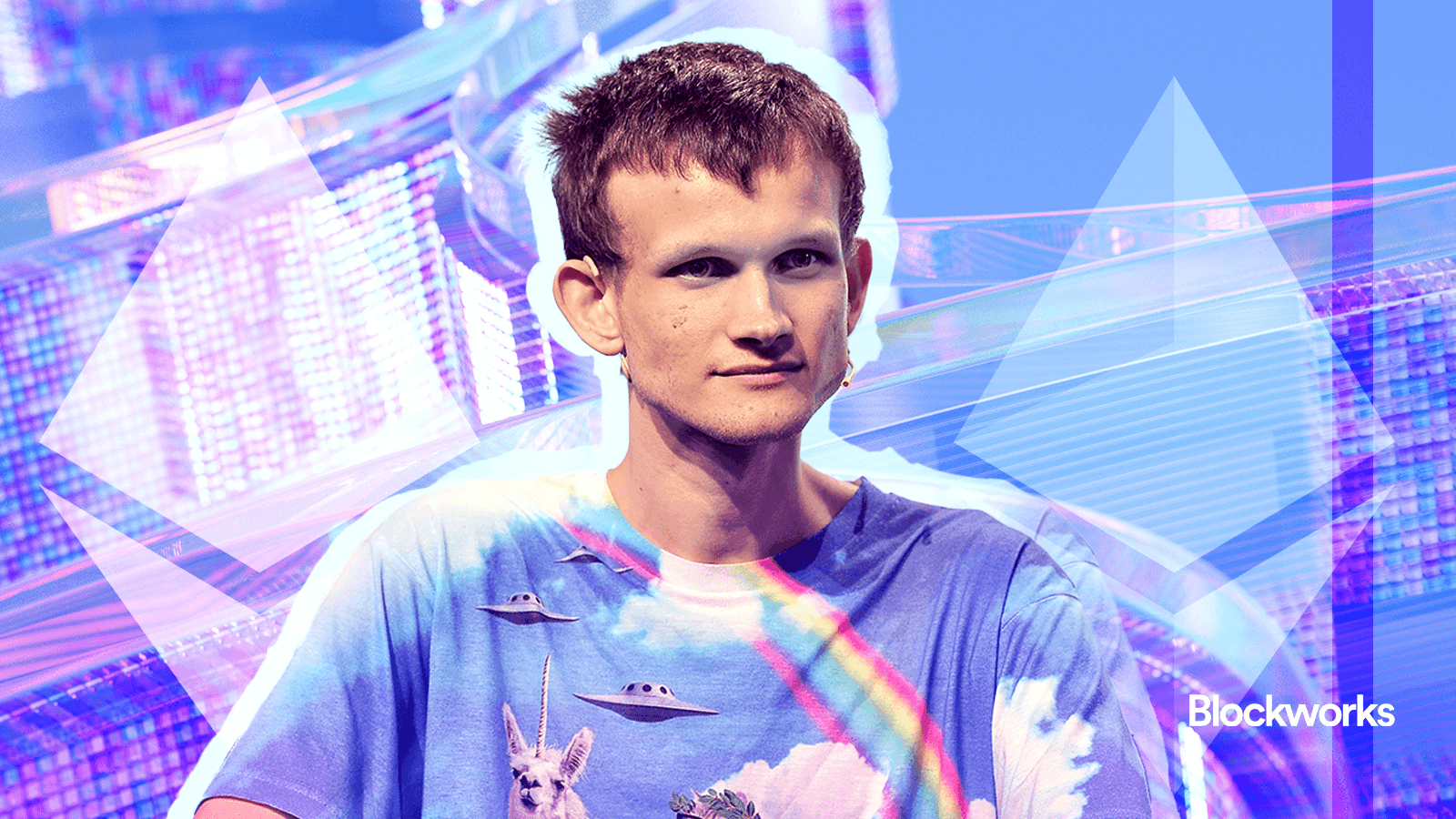Ethereum’s ‘Trustless Manifesto’ and the return to first principles
As DevConnect kicks off in Buenos Aires, Vitalik and friends call for a reset

Ethereum co-founder Vitalik Buterin | Steve Jennings/Getty Images for TechCrunch/"775040520SB00196_TechCrunch" (CC license) and Design12345/Shutterstock and Adobe modified by Blockworks
This is a segment from The Breakdown newsletter. To read full editions, subscribe.
As crypto markets have tumbled, it’s been a reflective week in Ethereum land. On Thursday, Vitalik Buterin and co-authors Yoav Weiss and Marissa Posner dropped The Trustless Manifesto — a sweeping, almost poetic call to arms for developers to recommit to the network’s founding ethos: Build systems that rely on math and consensus, not on people or platforms.
The document reads like a philosophical companion to Justin Drake’s Lean Ethereum proposal, which turned one year old this week. A newly active X account, @leanEthereum, has popped up to mark the milestone — and the overlap in timing doesn’t feel accidental. With DevConnect kicking off Monday in Buenos Aires, the pair of ideas together set the tone for a week that’s as much about vision as it is about innovation.
‘Trustlessness is the thing itself’
At its core, the manifesto argues that Ethereum’s success has also made it fragile. As infrastructure and apps scale, the community risks outsourcing too much — RPC endpoints, rollup sequencing, even “self-custody” — to a shrinking circle of trusted intermediaries. Each convenience, it warns, brings the network closer to dependence.
“The only defense is trustless design,” the authors write. “Without it, everything else — efficiency, UX, scalability — is decoration on a fragile core.”
The text lays out three “laws” of trustless design — no critical secrets, no indispensable intermediaries and no unverifiable outcomes — and ends with a pledge: “We refuse to call a system ‘permissionless’ when only the privileged can participate.”
The drift toward dependence
One of the manifesto’s most striking metaphors compares Ethereum’s current trajectory to that of email — once an open, decentralized protocol that anyone could run themselves. Today, spam filters, blocklists and trust-based reputation systems have made it practically impossible for ordinary users to host their own mail servers, the manifesto reads.
“Email became effectively centralized — not because the protocol was closed, but because practical trustlessness was lost,” the authors write.
It’s a cautionary tale for Ethereum’s access layer. If node operation, transaction relaying or cross-chain messaging ends up dependent on a handful of privileged service providers, the network could become as “permissionless” as Gmail: still functional, but fundamentally gatekept. The manifesto’s plea is simple — don’t let that happen.
“Every shortcut that assumes trust eventually costs freedom.”
If that strikes a chord, a smart contract is now live on mainnet for those who want to “sign” the manifesto — literally staking their names to the principle that decentralization is worth the friction.
From ‘Lean Ethereum’ to the endgame
If The Trustless Manifesto is a moral compass, Lean Ethereum is the architectural blueprint it points toward. Drake’s vision, described as Ethereum’s “endgame” or “final form,” imagines a network stripped down to its purest minimal core — fewer dependencies, simpler consensus, and stronger guarantees that anyone can run a node without institutional backing.
The Lean Ethereum account opened with a video teaser of sorts, sketching a picture of where Ethereum might be heading next: lighter, smaller, but more robust.
A related research proposal getting attention this week is the Ethereum Interop Layer (EIL), posted Nov. 13 on Ethereum Research.
EIL aims to make L2s feel like one chain without new trust assumptions: Users sign once via ERC-4337, wallets bundle a Merkle-rooted set of cross-L2 calls, and a CrossChainPaymaster coordinates “XLP” liquidity providers who front gas and funds with an L1-anchored dispute process to slash misbehavior. Instead of relying on intent solvers and opaque relayers, EIL leans on atomic, optimistic swaps and onchain vouchers to keep censorship resistance and verifiability intact — the manifesto’s “no indispensable intermediaries” rendered as working plumbing.
A fitting prelude to DevConnect
For all the talk of rollup scaling and AI agents, the conversation heading into DevConnect feels unusually introspective. Vitalik’s timing suggests a deliberate recalibration, reminding attendees that Ethereum’s biggest challenges are not only technical, but cultural.
Developers (and this newsletter writer) gathering in Buenos Aires may be debating zk cryptography and DeFi security, but beneath it all lies the same question the manifesto asks outright: What does it mean to trust less in 2025?
As the week begins, Ethereum stands ready to prove that growth doesn’t have to mean compromise. Or, as manifesto’s closing line opines:
“The designs will change. The principles will not.”
Get the news in your inbox. Explore Blockworks newsletters:
- The Breakdown: Decoding crypto and the markets. Daily.
- 0xResearch: Alpha in your inbox. Think like an analyst.






